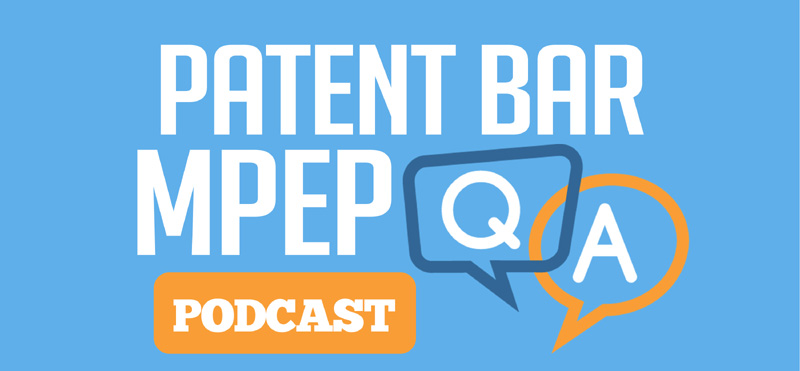
Podcast: Play in new window | Download
Subscribe: Apple Podcasts | RSS
Question:
List one of the underlying factual inquiries of obviousness.
Answer:
The factual inquiries enunciated by the Court are as follows:
- Determining the scope and content of the prior art; and
- Ascertaining the differences between the claimed invention and the prior art; and
- Resolving the level of ordinary skill in the pertinent art.
Chapter Details:
The answer to this question can be found in chapter 2100 of the MPEP. This chapter covers Patentability.
The answer is from the 9th Edition, Revision 07.2015. Depending on future changes to the MPEP, the question and answer may or may not be applicable in later Editions or revisions.
Section Summary:
This question and answer comes from section 2141 of the MPEP. The following is a brief summary of section 2141.
2141 Examination Guidelines for Determining Obviousness Under 35 U.S.C. 103
This section covers examination guidelines for determining obviousness under 35 U.S.C. 103. The use of common sense does not require a “specific hint or suggestion in a particular reference,” only a reasoned explanation that avoids conclusory generalizations.
The KSR decision is discussed in detail. The Supreme Court in KSR reaffirmed the familiar framework for determining obviousness as set forth in Graham v. John Deere Co., but stated that the Federal Circuit had erred by applying the teaching-suggestion-motivation (TSM) test in an overly rigid and formalistic way. In KSR, the Supreme Court particularly emphasized “the need for caution in granting a patent based on the combination of elements found in the prior art,” and discussed circumstances in which a patent might be determined to be obvious.
The basic factual inquiries of Graham v. John Deere Co. are also discussed. The Graham factors, including secondary considerations when present, are the controlling inquiries in any obviousness analysis. The factual inquiries enunciated by the Court are as follows:
- Determining the scope and content of the prior art; and
- Ascertaining the differences between the claimed invention and the prior art; and
- Resolving the level of ordinary skill in the pertinent art.
This section also covers rationales to support rejections under 35 U.S.C. 103, the applicant’s reply, and consideration of applicant’s rebuttal evidence.
